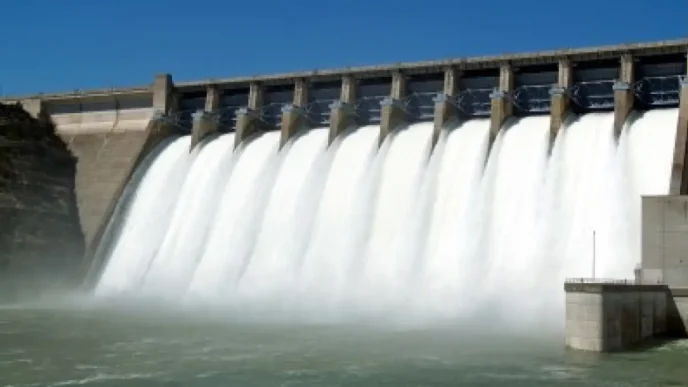Vietnam has taken a significant step towards a sustainable energy future with Prime Minister Phạm Minh Chính signing Decision No. 266/QĐ-TTg, approving a comprehensive plan to transition from coal to clean energy. This ambitious strategy, aligned with the Global Coal-to-Clean Energy Transition Statement, underscores Vietnam’s commitment to achieving net-zero emissions by 2050 and positions the country as a regional leader in low-carbon development. With a detailed roadmap to phase out coal, expand renewables, and introduce cutting-edge technologies, the plan promises to reshape Vietnam’s power sector while addressing pressing environmental and social challenges.
A Roadmap to Net-Zero by 2050
At the heart of the implementation plan is a multi-decade strategy to decarbonise Vietnam’s energy sector, which has long relied on coal as a primary source of electricity. The government aims to mobilise both domestic and international resources to overhaul the power industry, ensuring a stable and affordable electricity supply while slashing greenhouse gas emissions. By 2030, Vietnam plans to pilot carbon capture systems at selected aging coal-fired power plants, such as those at Phả Lại and Ninh Bình, with the potential decommissioning of around 540 MW of coal capacity if efficiency and emission targets are not met.
The plan also sets out to increase the share of renewable energy in the national grid to between 29.2 and 37.7 per cent by the end of the decade. This includes accelerating the development of solar, wind, and other clean energy sources, alongside research into co-firing technologies using biomass and ammonia to reduce CO2 emissions from existing plants. A notable mention is the Ninh Thuận nuclear power project, expected to be completed within the next five years, adding a new dimension to Vietnam’s energy mix.
Looking further ahead, by 2045, the country targets the development of at least 1,160 MW of clean energy capacity to replace coal power, alongside transitioning over 25,000 MW of coal capacity to biomass and ammonia. The ultimate goal is clear: by 2050, all coal-fired plants will either switch to clean fuels or integrate carbon capture technology, effectively eliminating coal from power generation.
Balancing Energy Security and Environmental Goals
Vietnam’s energy transition plan is not just about cutting emissions; it is also a pragmatic response to the challenges of energy security and economic growth in a rapidly developing nation. With a population of over 100 million and an economy hungry for power, ensuring a stable electricity supply remains a top priority. The government’s approach reflects this balance, combining the gradual phase-out of outdated and inefficient coal facilities with investments in modern, cleaner technologies.
One key pillar of the plan is the adoption of co-firing technology, which mixes clean fuels like biomass and ammonia with coal to lower emissions. While this is seen as a transitional measure, it offers a practical way to reduce the environmental impact of existing plants without immediate decommissioning, which could disrupt power supply. However, the effectiveness of such technologies on a large scale remains to be seen, and experts caution that co-firing must be paired with robust monitoring to ensure genuine emission reductions.
International cooperation and financial support are also critical to the plan’s success. Vietnam has already garnered attention for its commitments under global climate agreements, and this latest decision is likely to attract further investment from partners eager to support green energy projects in South East Asia. Yet, securing the necessary funding and technical expertise to scale up renewables and deploy carbon capture systems will be a significant hurdle, particularly for a country still grappling with the legacy of coal dependency.
A Just Transition: Social and Economic Impacts
Beyond technology and policy, Vietnam’s plan places a strong emphasis on a “just energy transition,” recognising that the shift away from coal must not come at the expense of workers and communities dependent on the industry. Coal-fired power plants, particularly in regions like Ninh Bình, employ thousands of people, and their closure or conversion could have far-reaching social consequences if not managed carefully.
The government has pledged to implement comprehensive measures to support affected workers, including retraining programmes and investments in alternative industries. This approach aims to mitigate the risk of job losses while fostering new opportunities in the renewable energy sector, which is expected to create a wave of green jobs over the coming decades. For instance, the expansion of solar and wind projects, such as the solar power station on Sinh Ton Island, could serve as a model for sustainable development in remote and underserved areas.
Nevertheless, the scale of the challenge is immense. Transitioning over 25,000 MW of coal capacity by 2045 will require not only technological innovation but also careful planning to address regional disparities. Rural communities, often more reliant on traditional energy sources, may struggle to adapt to rapid changes, while urban centres could face increased pressure on electricity grids as demand continues to rise.
Regional and Global Implications
Vietnam’s commitment to phasing out coal also carries significant implications for the wider South East Asian region, where many countries grapple with similar energy dilemmas. As one of the region’s fastest-growing economies, Vietnam has the potential to set a precedent for others, demonstrating that economic progress and environmental responsibility can go hand in hand. If successful, the plan could inspire neighbouring nations like Indonesia and Thailand, both of which face mounting pressure to reduce coal use, to accelerate their own transitions.
On a global scale, Vietnam’s efforts contribute to the broader fight against climate change, aligning with international frameworks such as the Paris Agreement. The target of net-zero emissions by 2050 mirrors commitments made by other major economies, and the focus on carbon capture and renewable energy expansion positions Vietnam as a serious player in global climate action. However, the road to 2050 is fraught with uncertainties, and the government will need to navigate geopolitical tensions, economic constraints, and technological challenges to deliver on its promises.
Challenges and Uncertainties Ahead
While the plan has been hailed as a bold step forward, it is not without its critics and potential pitfalls. The reliance on unproven technologies like carbon capture and storage raises questions about feasibility and cost. If these systems fail to deliver the expected reductions in emissions, Vietnam may struggle to meet its interim targets, potentially undermining confidence in the broader strategy.
Moreover, the ambitious timeline for renewable energy expansion, while commendable, hinges on factors beyond the government’s control, such as private sector investment and global supply chains for critical components like solar panels and wind turbines. Delays or disruptions in these areas could slow progress, leaving the country reliant on coal for longer than planned.
There are also concerns about the social cost of decommissioning coal plants, particularly in communities where alternative livelihoods are not yet viable. While the government has committed to a just transition, the specifics of how this will be achieved remain vague, and there is a risk that some groups could be left behind in the rush to meet emission targets.
A Defining Moment for Vietnam’s Future
Vietnam’s decision to phase out coal and embrace clean energy marks a defining moment in its journey towards sustainability. With a clear roadmap, a commitment to social welfare, and a focus on international cooperation, the country is laying the groundwork for a greener, more resilient energy sector. Yet, the path ahead is complex, requiring sustained political will, significant investment, and careful management of social impacts.
If successful, this transition could serve as a blueprint for other developing nations, proving that ambitious climate goals are within reach even in the face of economic and structural challenges. For now, the world watches as Vietnam takes its first steps towards a net-zero future, with the hope that its efforts will inspire broader change across South East Asia and beyond. As solar panels gleam on remote islands like Sinh Ton and nuclear projects take shape in Ninh Thuận, the vision of a cleaner, more sustainable Vietnam is slowly but surely coming into focus.














